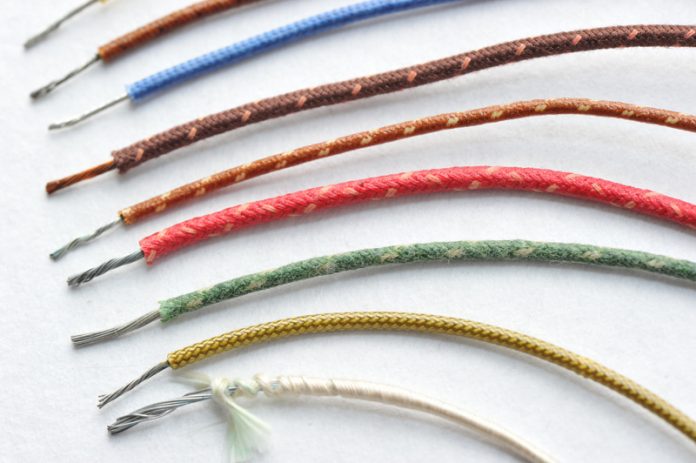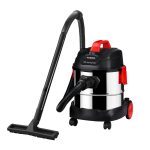Last Updated on May 23, 2024 by Ali Hamza
One thing that all electrical projects have in common is electrical wiring. Knowing what wire or cable you need is critical when installing new wiring. Understanding the different forms of electrical wiring can help you learn more about the circuits that already exist in your home. For example, it will be easier to figure out which wire goes where when looking at the junction box.
Wires in modern homes, especially residences built after the mid-1960s, are comparable. Furthermore, any new wiring must adhere to local construction rules and the national electrical code. Electrical wiring entails connecting wires and cables to various household appliances such as switches, lights, and receptacles to the electrical system.
What are the types of electrical wiring?
It’s critical to comprehend some of the fundamental terminologies while discussing wiring. A conductor, or substance that carries electricity, is an electrical wire. Copper or aluminum (or copper-sheathed aluminum) is used for domestic wiring, while aluminum is no longer widely utilized. In most circumstances, it can be stranded wire or a solid metal conductor that is insulated with a non-conductive plastic covering.
On the other hand, a cable assembles two or more wires using a single jacket. The NM (nonmetallic) cable is the most frequent variety in modern homes. This is made up of two or more separate wires that are covered in a protective plastic covering and include the following information:
1. NM Cable
The NM cable, often known as the Romex cable after the most famous electrical wire brand name, is the most prevalent form of residential electrical wiring. Three or more independent conductors are bundled together in a sheathing, a flexible plastic jacket, in NM cables. Appliances, fixtures, switches, and outlets are commonly wired using this type of cable in dry, interior home wiring. Today’s NM cables are color-coded, which means the wire gauge is indicated by the color of the cable’s outer jacket. The following are the most frequent NM cables seen in modern homes:
- Black sheathing on 6-gauge, 55-amp circuits.
- Black sheathing on 8-gauge, 40-amp circuits.
- The orange sheathing is included with 10-gauge, 30-amp circuits.
- The yellow sheathing is included with 12-gauge, 20-amp circuits; white sheathing is included with 14-gauge, 15-amp circuits.
2. Armored Cable
Local rules are stricter than national codes for residential electrical wiring. As a result, you may find that NM cables are not authorized in some regions, and instead, protected or AC cables are used. AC wire, also known as BX, dates from the early 1900s and features a flexible metallic covering that provides additional protection for the conductors inside. AC is not permitted in commercial or residential structures with three stories.
Read More: Outdoor Outlet: A Comprehensive Guide About Outdoor Outlet Not Working
3. Feeder Cable in the Ground
The UF (underground feeder) cable is a type of NM cable designed for moist areas and direct ground burial. The UF cable is required when extending lines underground or to outdoor installations. Using PVC conduit underground and pushing wires through is another alternative electricians use. This cable has insulated hot and neutral wires and a bare ground wire and is typically used to serve outdoor fixtures. Unlike the NM cable, the UF cable has a grey outer sheathing and solid plastic sheathing around each wire. This sort of cable can also be utilized for extensive circuit wiring.
4. Wire with a Low Voltage
Circuits that utilize less than 50 volts are wired with low-voltage wiring. This sort of wiring is the best option for objects that do not use much energy, such as doorbells, thermostats, sprinkler systems, or landscape lighting. A low-voltage wire is available in gauges ranging from 12 to 22 and is either insulated or coated in cable sheathing. Even while low-voltage cables seldom cause shocks, turning off your gadgets is still a good idea before working with them.
5. THHN/THWN Wire
THHN and THWN are two of the most prevalent kinds of insulated wires. Unlike the NM cable, these are single conductors, and each has its color-coded insulation. They’re also shielded by a plastic or metal tube conduit.
- Ground wires are green or yellow-green.
- Hotwires are black, orange, or red.
- Neutral wires are white or brown.
In terms of insulation, the letters denote the following characteristics:
- T Indicates Thermoplastic.
- H Stands for Heat-resistant, and HH is very heat-resistant.
- W Represents for Rated for Wet Locations.
- N Stands for Nylon-coated for extra protection.
These wires should only be used for short exposed lengths, such as wiring connections for water heaters or trash disposals, in basements or garages, and within the house. These are circuit wires, and they should never be touched when the circuits are turned on.
6. Data and phone wire
Low-voltage lines are used in both phone and internet connections. Although Cat (Category) 5 is the most typical cable type, your telephone and data bar might contain four to eight wires. The most efficient phone and data transmission form is the category five cable, with eight wires wrapped together in four pairs. Cat 5 line also has a higher capacity and quality than conventional phone wire. Even if the data cable does not carry a high voltage, having data wiring in touch with domestic wiring. As a result, handle it with care and avoid touching naked wires.
Any house or company may benefit significantly from an electrical overhaul, both in value and beauty. You’ll be surprised at how much an excellent electrical improvement may improve your house or company. When you hire an electrical business to enhance your home and decide to proceed to the point where you need an electrical update, the firm’s expert has enough experience and knowledge to assist you appropriately.
Which wiring kind is the safest?
Copper can withstand intense pressure with little damage and wear because of its high tensile strength. The majority of electrical professionals and contemporary consumers choose electrical cables.
FAQs
Apart from this if you are interested to know more about Home-Based Electrical System then visit our Tech category.
























